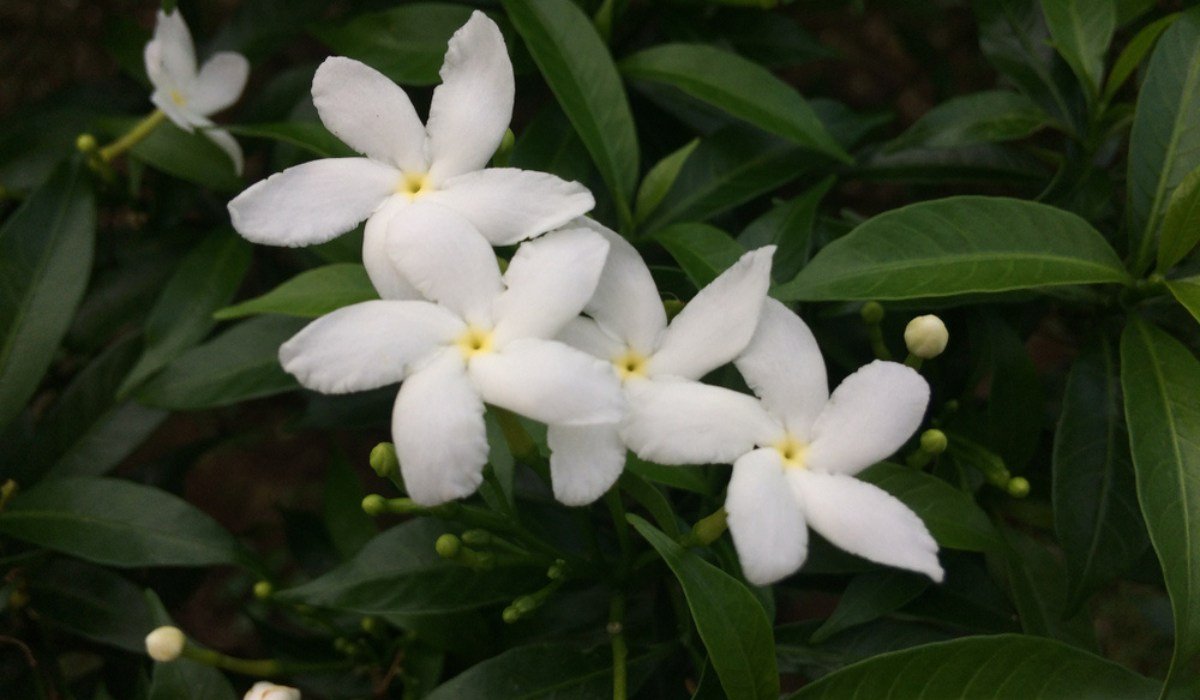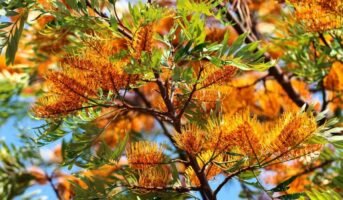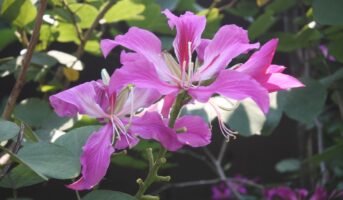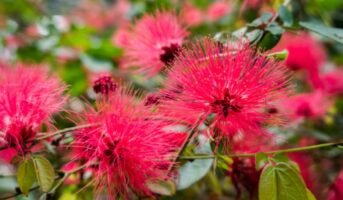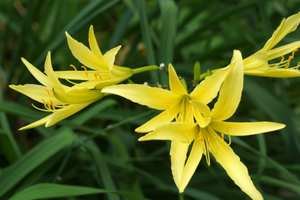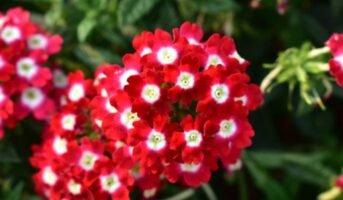If you are looking to add to the variety of your garden, Jasminum Grandiflorum is a great option to consider. This beautiful flowering plant is widely cultivated due to its decorative uses. It is not the densest or biggest shrub, but it does make an excellent plant for a spot near your home’s window. After planting, you can expect the Jasminum Grandiflorum flowers to begin to bloom after six months. Read on to learn more about how to grow and maintain this plant in your garden.
What is Jasminum Grandiflorum?
Jasminum Grandiflorum is a shrub that can be evergreen or deciduous and can grow to be between two and four metres tall. It is also known as Royal Jasmine and Spanish Jasmine, among other names. Jasminum Grandiflorum is known for its white fragrant flowers that are produced along with opposite, pinnate leaves formed of 5-11 leaflets.
There are two known subspecies of Jasminum Grandiflorum:
- S. Grandiflorum subs. grandiflorum
- J. Grandiflorum subs. floribundum
Both of these subspecies are classified as Grandiflorum.

Source: Pinterest
Jasminum Grandiflorum: Key facts
| Botanical name | Jasminum Grandiflorum |
| Common name | Spanish Jasmine |
| Family | Oleaceae |
| Plant division | Angiosperms |
| Plant growth form | Climber, Vine & Liana, Shrub |
| Mode of nutrition | Autotrophic |
| Plant shape | Weeping / Pendulous |
| Maximum height | 5 m |
| Preferred climate zone | Tropical, Sub-Tropical / Monsoonal, Temperate |
| Native distribution | Africa, Arabian peninsula, South Asia, China |
Jasminum Grandiflorum: Features
- Jasminum Grandiflorum has green stems that are either angular or grooved in form, and the stems are woody and hairy.
- The leaves of Jasminum Grandiflorum have a green tint and an ovate-acute or acuminate form.
- The upper side of the leaves are glabrous, meaning they do not have any hairs on them.
- These leaves have a thickness of around 0.35 millimetres and are grouped in whorls of three. In addition, their petioles are rather small.
- The flower’s sepals are green, while the blossoms themselves are white and glabrous, and they are arranged in a linear pattern.
- In the middle of the tube that makes up the corolla, each individual flower has two stamens, each of which has a yellow anther.
- Jasminum Grandiflorum blossoms do not produce any fruit.

Source: Pinterest
Jasminum Grandiflorum: How to grow?
Here’s all you need to know about growing Jasminum Grandiflorum.
Growing Jasminum Grandiflorum normally
- Purchase a little Jasmine plant from a garden centre or propagate your own Spanish jasmine from a clipping.
- Dig a hole twice as wide as the plant’s container but at the same depth.
- Remove the Jasminum Grandiflorum from its container and set it in the prepared hole; next, fill the hole with soil.
- Put a 2-inch layer of sugarcane or other mulch around Jasminum Grandiflorum, leaving the stem exposed.
- Train Jasminum Grandiflorum stems to grow upward by tying them to a trellis. A trellis will prevent a heavy climber from falling to the earth. Place the trellis away from the roots to prevent harm.
- Position in the garden that gets the most sunlight is ideal, as darkness inhibits both growth and flowering.
- The combination of low daytime temperatures and chilly, moist circumstances is detrimental to growth and flowering.
- Nearly any type of well-drained soil can be used, although sandy clays or loams with a pH ranging from 6 to 8 are ideal.
- Jasminum Grandiflorum will take around two years to fully mature once it has been planted, but it will begin to produce flowers after just six months have passed. The slender branches begin to develop a few tiny round leaves, but for the most part, the branches are left barren. After the third year, there is an abundance of blossoming in subsequent years.
- Jasminum Grandiflorum can eventually grow to a height of roughly 8 feet tall in places and temperatures that are classified as moderate. However, it is possible that when grown indoors, it will only reach a height of several feet.
Growing Jasminum Grandiflorum through propagation
- Jasminum Grandiflorum is a shrub with long, vining stems and branches that twist and turn like vines.
- Simply cut a branch that is somewhat thin and make your cut below a node.
- This end should be dipped in a prepared rooting hormone and then placed in the moist soil of a tiny container.
- Place the container somewhere shady and cover it with a polythene bag.
- In a few weeks, new roots will emerge.
Jasminum Grandiflorum: Care tips
- It is best to steer clear of saltwater soils as well as those that are marshy, waterlogged, or excessively stony.
- Water is good for Jasminum Grandiflorum. The soil should never be fully dry, nor should it ever be completely saturated with water.
- It is recommended that fertiliser that is high in potassium and phosphorus be applied to Jasminum Grandiflorum every other season.
- Put in a location that receives dappled sunlight to promote healthy development. Place a support structure or trellis within the house close to a window that faces south.
- When grown inside, Jasminum Grandiflorum prefers a cool environment that has good air circulation.
Jasminum Grandiflorum: Benefits
Some of the key benefits of growing Jasminum Grandiflorum are as follows:
Ornamental use
Having a lovely plant in the home is similar to having a good friend around. Jasminum Grandiflorum is a cute little plant which enhances the aesthetic look of your home. The flower, being white in colour, is a symbol of peace and brings positivity to the house. Further, it brings such an aura to the house with its fragrance that lightens your home. The blossoms of Jasminum Grandiflorum are commonly used to decorate the hair of Indian ladies. The Buddhist and Hindu places of worship frequently make use of these flowers.
Commercial use
The petals of Jasminum Grandiflorum are used in a process called solvent extraction, which results in the production of jasmine concrete and jasmine oleoresin. In the fragrance market, both of these items are in extremely high demand.
The aroma of Jasminum Grandiflorum is well-known around the world. It was brought to Europe as a perfume in the sixteenth century. The fragrance of the flowers relieves mental and emotional tensions by promoting a tranquil environment. Due to its pleasant aroma, Jasminum Grandiflorum is widely used in the production of essential oils, perfumes, soaps, and cosmetics.

Source: Pinterest
Jasminum Grandiflorum: Medicinal uses
- In India, the leaves of Jasminum Grandiflorum are commonly employed in Ayurvedic herbal treatment.
- Prescriptions have been written for Jasminum Grandiflorum components, including its sprouts and dried flowers. This form of holistic medicine was utilised to treat a variety of conditions, including dermatosis, coryza, and nasal haemorrhage.
- The leaves of Jasminum Grandiflorum are used as a clarified butter ingredient, as a wound therapy for infected wounds, and as a cleansing and sterilising agent for ulcers.
- In addition, the leaves can be transformed into an anti-infection oil. Additionally, the leaves can be eaten to alleviate toothaches and stomatitis.
- Jasminum Grandiflorum root can be boiled with goat’s milk and sugar to alleviate discomfort associated with urinary retention and kidney stone expulsion.
- Additionally, the root was converted into a paste for improving the skin and eliminating freckles or dark spots.
- For headaches, the root paste can also be administered to the foreheads.
- Jasminum Grandiflorum is a component of a hair oil used to cure baldness and alopecia.
- It is also a component of an eye salve used to treat eyesight loss.
- Jasminum Grandiflorum was also prescribed for severe skin disorders and leprosy in India.
- In the West, the blossoms of Jasminum Grandiflorum have also been processed into a syrup used to treat throat conditions such as coughing and hoarseness.
Jasminum Grandiflorum: Toxicity
Jasminum Grandiflorum is not a toxic plant and is safe for both humans and animals. However, it’s advisable to keep all plants out of reach of children and pets.
FAQs
How rapidly does Jasminum Grandiflorum grow?
The plant can grow at a rate of 12 to 24 inches per year.
How often should Jasminum Grandiflorum be watered?
A new plant should be watered every day.
Housing News Desk is the news desk of leading online real estate portal, Housing.com. Housing News Desk focuses on a variety of topics such as real estate laws, taxes, current news, property trends, home loans, rentals, décor, green homes, home improvement, etc. The main objective of the news desk, is to cover the real estate sector from the perspective of providing information that is useful to the end-user.
Facebook: https://www.facebook.com/housing.com/
Twitter: https://twitter.com/Housing
Email: [email protected]
